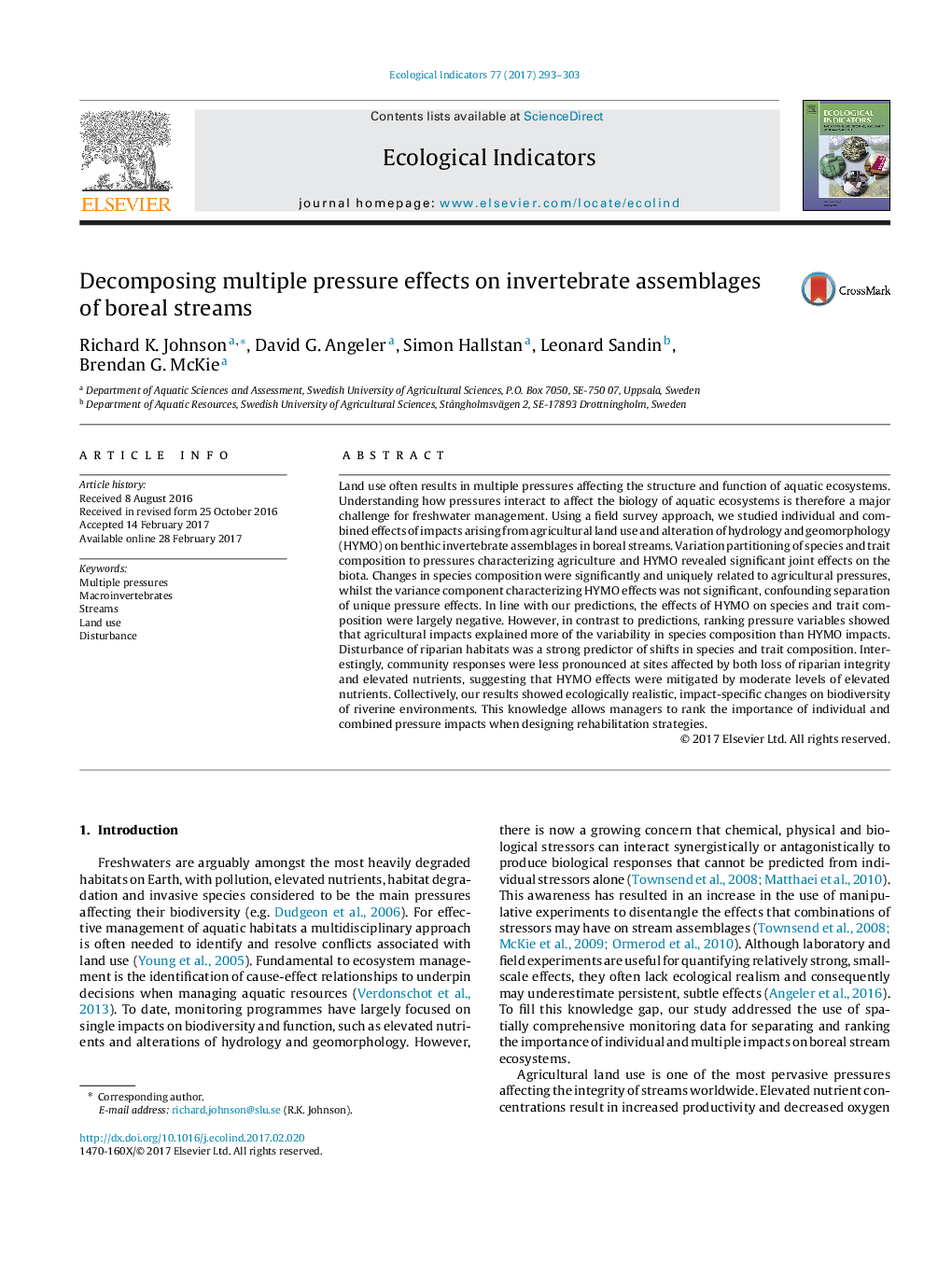| Article ID | Journal | Published Year | Pages | File Type |
|---|---|---|---|---|
| 5741733 | Ecological Indicators | 2017 | 11 Pages |
Land use often results in multiple pressures affecting the structure and function of aquatic ecosystems. Understanding how pressures interact to affect the biology of aquatic ecosystems is therefore a major challenge for freshwater management. Using a field survey approach, we studied individual and combined effects of impacts arising from agricultural land use and alteration of hydrology and geomorphology (HYMO) on benthic invertebrate assemblages in boreal streams. Variation partitioning of species and trait composition to pressures characterizing agriculture and HYMO revealed significant joint effects on the biota. Changes in species composition were significantly and uniquely related to agricultural pressures, whilst the variance component characterizing HYMO effects was not significant, confounding separation of unique pressure effects. In line with our predictions, the effects of HYMO on species and trait composition were largely negative. However, in contrast to predictions, ranking pressure variables showed that agricultural impacts explained more of the variability in species composition than HYMO impacts. Disturbance of riparian habitats was a strong predictor of shifts in species and trait composition. Interestingly, community responses were less pronounced at sites affected by both loss of riparian integrity and elevated nutrients, suggesting that HYMO effects were mitigated by moderate levels of elevated nutrients. Collectively, our results showed ecologically realistic, impact-specific changes on biodiversity of riverine environments. This knowledge allows managers to rank the importance of individual and combined pressure impacts when designing rehabilitation strategies.
